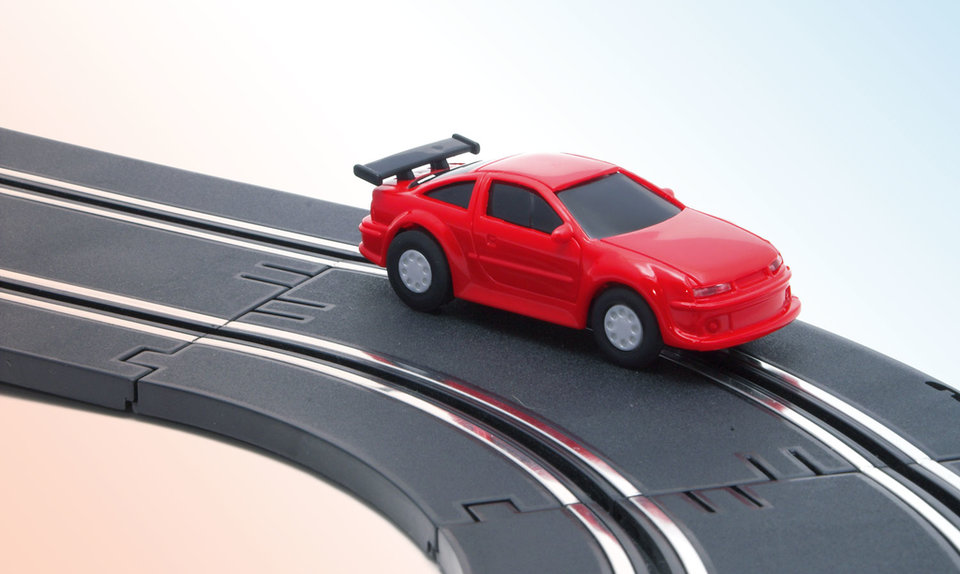New transport concepts
Connectivity and the migration to mobility
Continue reading
"The automotive sector has moved from a manufacturing-led industry to one that is driven by technology and data."
Philip Nothard - Insight & Strategy Director,
Cox Automotive
More consumers are choosing to use vehicles as and when they need them as opposed to owning them outright. The trend is accelerating due to changes in working and living patterns post-pandemic. The definition of ownership is also being redefined, driven by evolving finance and lease models. Vehicle manufacturers, fleets and dealer groups are also all wrestling with the opportunity to offer subscription-based, flexible ownership and multi-user products. One size does not fit all.
However, while consumers were increasingly accepting of alternative shared mobility solutions prior to COVID-19, there has been a shift back post-pandemic. The recent Cox Automotive 2021 Evolution of Mobility Study in the US suggests cost, convenience and safety are the top considerations when it comes to choosing a transport solution. Almost half (46%) of consumers surveyed changed their habits during the pandemic, including halting their use of public transport and ride-hailing services, preferring to drive their own vehicle. Traditional vehicle ownership is still viewed as the most convenient (78%), practical (78%) and flexible (58%) option for day-to-day travel.
When discussing mobility, there is a plethora of technologies and solutions which could fall under this banner. The Insight Report is primarily concerned with the vehicles themselves, and specifically the automotive sector. Although there are significant developments in rail, marine and aviation, as well as micro-mobility, the emphasis for the automotive sector is on how passenger cars and vans can be redeployed to suit new travel patterns, consumer concerns, and business needs.
What mobility means for Cox Automotive?
Paul Humphreys, Managing Director at Cox Automotive Mobility Solutions - International:
“The emerging transport ecosystem is autonomous, connected, electric and shared. We are evolving our offer to enable customers to keep their fleets and people moving safely and sustainably for years to come. This means harnessing data and connecting partners to simplify and accelerate business with proven mobility technology and services.
“We are focused on data-driven fleet operations, as well as software and technology developments that power a flexible approach to buying, selling, driving, and disposing of vehicles and enable innovative customer experiences. On the electric and autonomous side of the industry, we are investing in battery health, accurate valuations, vehicle-sensor diagnostics and calibration. We are committed to optimising the life cycle management of battery packs within electric vehicle fleets, through repair, remanufacturing, refurbishing and repurposing.
“New mobility solutions represent a catalyst for evolution and revolution, prompting the automotive industry to innovate by developing mobility solutions of their own and experiment with new business models and new revenue sources. At Cox Automotive, we are working with our customers and partners to deliver data-driven insights which will support the journey that lies ahead.”

From manufacturer rental fleet to subscription model
Sebastian Fuchs, Managing Director Manheim and RMS Automotive Continental Europe:
“The way in which we use vehicles is changing. Most vehicle manufacturers now offer a version of a mobility scheme, whether that is through personal leasing, subscription, flexi-rent or another model. The challenge for all of them is how to make this work effectively and efficiently. We’ve seen several manufacturers dip their toe in the water and then withdraw to re-evaluate their approach.
“Manufacturers used to own rental fleets. It feels like we might be seeing a return to that space, albeit under a different name. There is also a potentially untapped mobility solution in the used car fleet, which could be deployed through rental and subscription solutions as well as the more traditional sales route.”
The rise of subscription
This report has already explored electrification in chapter 2.0; however, the remaining elements of CASE or ACES (Autonomy, Connectivity and Shared Mobility) are discussed below. While the latter has been significantly impacted by concerns over sanitisation and transmission of the COVID-19 virus, with ride-hailing and car-sharing falling off during the pandemic, the concept of subscription is beginning to make real traction. For example, in the UK, 15% of retail sales for Volvo came from the Swedish manufacturer’s subscription brand, Care by Volvo, in its first year of operation.
Opportunities for vehicles in a 24/7 economy
"We certainly need to consider questions like whether a consumer actually requires their vehicle 24/7. As air quality, congestion and other environmental concerns take centre stage, is it better for a vehicle to be parked on a driveway or side street or in use constantly but with different drivers, thus lowering the total volume of vehicles required. Clearly the location is going to be key – drivers in cities may have less need of immediate access to transport than those in rural areas, where public infrastructure is less frequent."
Didier Van Bouwel, Chief Operating Officer of Modix International
Autonomy and the space race
No longer a novelty, all new vehicles come with some degree of automated driver assistance systems (ADAS), and many have elements of sophisticated connectivity. However, there have been several high-profile issues with autonomous vehicles causing or being part of accidents. This is leaving many consumers wary, but so-called robo-taxis are already rolling out in various geographies around the world including Germany, the US and China. These tend to operate in controlled areas where innovation and acceptance of change is already high, like San Francisco.
For driverless vehicles to be practical, the connectivity challenge needs to be resolved. This requires investment in telecommunications networks and infrastructure and upgrading legacy systems. In addition, satellite technology that supports communications needs to be enhanced to consider increased data transfer. Tesla is a prime example, with hundreds of thousands of Low Earth Orbit (LEO) satellites in operation and permission being sought to use these to interact with moving vehicles.
Philip Nothard, Insight and Strategy Director, Cox Automotive: “Going fully autonomous without investment in connectivity is like sticking a Scalextric car on the carpet. It just won’t work. Until the telecommunications infrastructure is in place, there could be the most sophisticated vehicles on the road, but they won’t be able to talk to each other or the road furniture, rendering them almost useless.”

Cybersecurity
With more data being moved around, there is also an increased risk of accidental or malicious damage. Cybersecurity is a new priority for automotive but one which is symbolic of the sector’s shift from a manufacturing to technology-led approach. As noted in our 2020 Insight Report, the data generated by a vehicle is technically owned by the vehicle owner/operator/driver. But, in a shared mobility era, these could all be different people or organisations. Add to that the service providers who will need access to provide customer support, and there are going to be plenty of open doors for hackers to potentially exploit. This is an area that must move quickly if trust in connected and autonomous vehicles is to be generated and maintained.
Read more about the Cox Automotive perspective on mobility solutions and vehicle ownership trends in the Cox Automotive trend definition document #2: The migration to mobility and diversification of ownership models.
